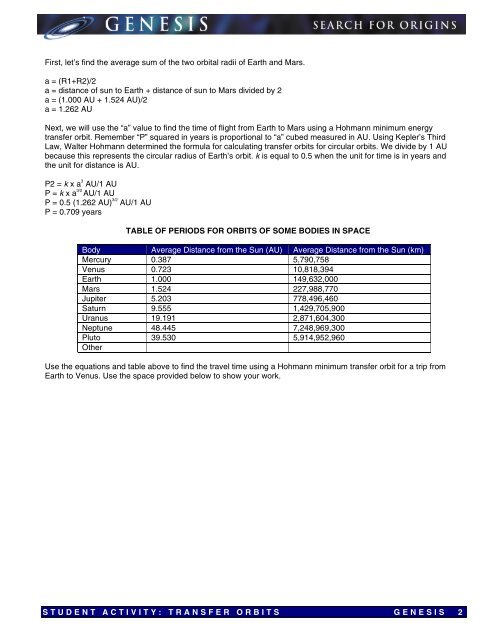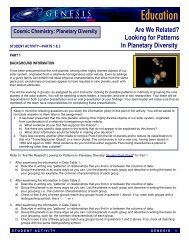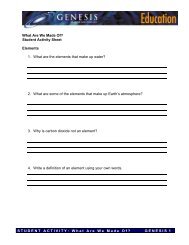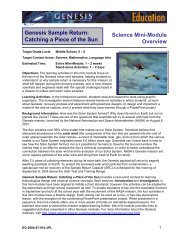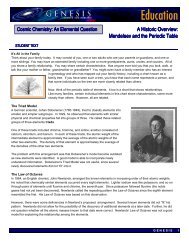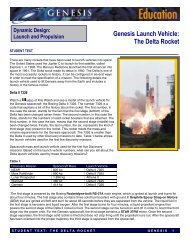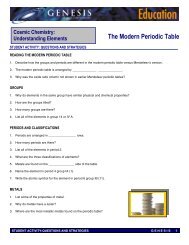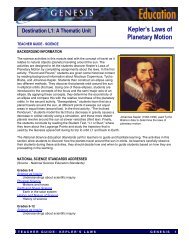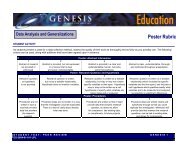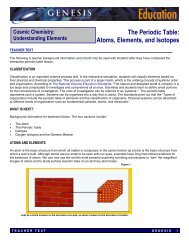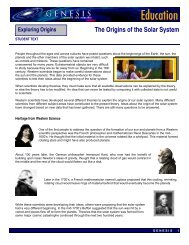A Thematic Unit Minimum Energy Transfer Orbits - Genesis
A Thematic Unit Minimum Energy Transfer Orbits - Genesis
A Thematic Unit Minimum Energy Transfer Orbits - Genesis
You also want an ePaper? Increase the reach of your titles
YUMPU automatically turns print PDFs into web optimized ePapers that Google loves.
First, let’s find the average sum of the two orbital radii of Earth and Mars.<br />
a = (R1+R2)/2<br />
a = distance of sun to Earth + distance of sun to Mars divided by 2<br />
a = (1.000 AU + 1.524 AU)/2<br />
a = 1.262 AU<br />
Next, we will use the “a” value to find the time of flight from Earth to Mars using a Hohmann minimum energy<br />
transfer orbit. Remember “P” squared in years is proportional to “a” cubed measured in AU. Using Kepler’s Third<br />
Law, Walter Hohmann determined the formula for calculating transfer orbits for circular orbits. We divide by 1 AU<br />
because this represents the circular radius of Earth’s orbit. k is equal to 0.5 when the unit for time is in years and<br />
the unit for distance is AU.<br />
P2 = k x a 3 AU/1 AU<br />
P = k x a 3/2 AU/1 AU<br />
P = 0.5 (1.262 AU) 3/2 AU/1 AU<br />
P = 0.709 years<br />
TABLE OF PERIODS FOR ORBITS OF SOME BODIES IN SPACE<br />
Body Average Distance from the Sun (AU) Average Distance from the Sun (k<br />
Body Average Distance from the Sun (AU) Average Distance from the Sun (km)<br />
Mercury 0.387 5,790,758<br />
Venus 0.723 10,818,394<br />
Earth 1.000 149,632,000<br />
Mars 1.524 227,988,770<br />
Jupiter 5.203 778,496,460<br />
Saturn 9.555 1,429,705,900<br />
Uranus 19.191 2,871,604,300<br />
Neptune 48.445 7,248,969,300<br />
Pluto<br />
Other<br />
39.530 5,914,952,960<br />
Use the equations and table above to find the travel time using a Hohmann minimum transfer orbit for a trip from<br />
Earth to Venus. Use the space provided below to show your work.<br />
STUDE NT ACTI V ITY: TRAN SFER O RBITS G E NE SIS<br />
2


